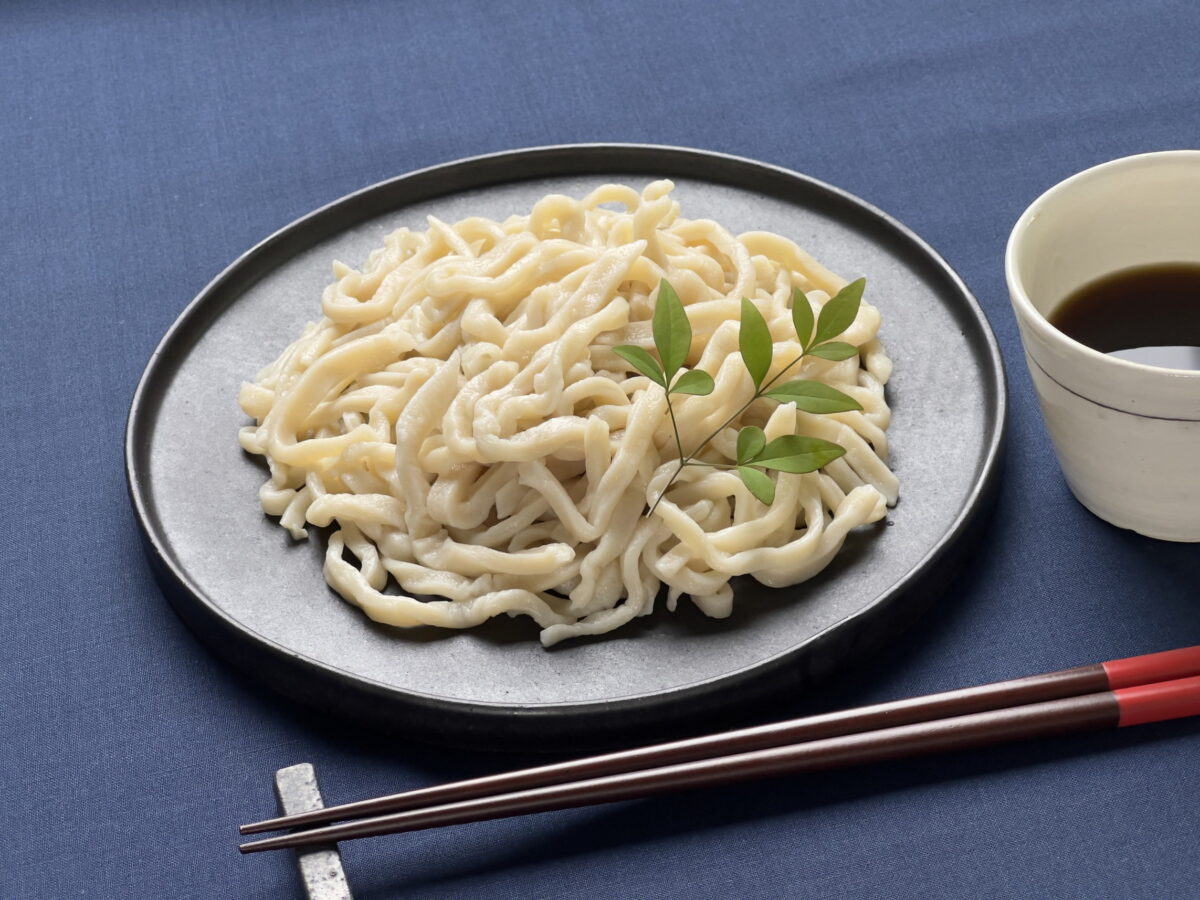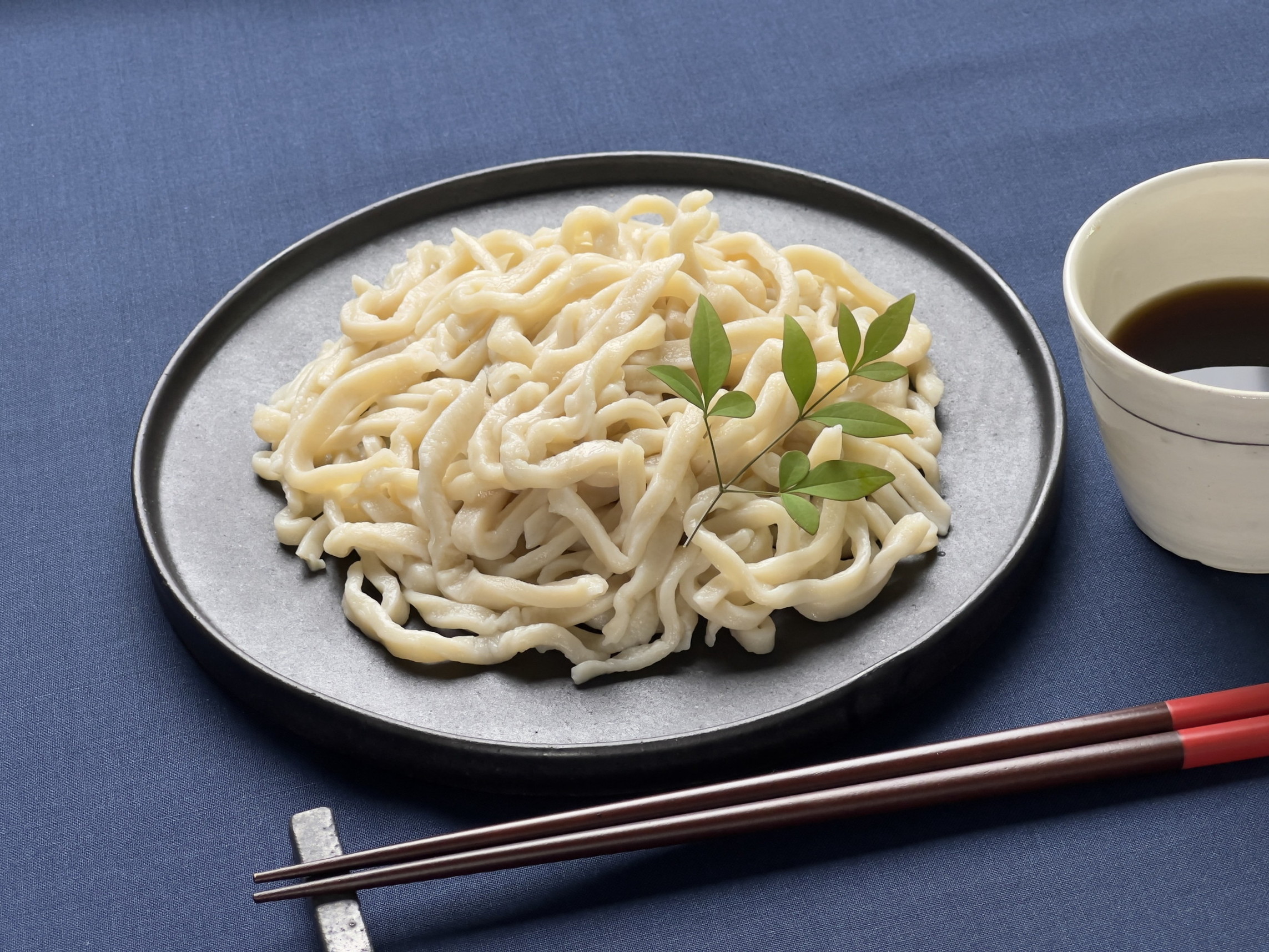
Did you know that Saitama Prefecture is a major player in Japan’s “udon kingdom”? Thanks to figures like Aizo Gonda, who significantly boosted wheat yields with his cultivation methods, Saitama boasts a rich history and variety of udon noodles. Historically, wheat was widely grown as a second crop to rice in Saitama, making it a central part of the local diet and leading to the development of unique udon styles in different areas.
Dish Name: Saitama no Udon
- Region / Location: Saitama Prefecture
- Primary Area of Tradition: Entire Saitama Prefecture
- Main Ingredients: Wheat flour
How It’s Eaten / Served
Making Saitama’s udon starts with kneading wheat flour with salt and water until it reaches the firmness of an earlobe. After letting the dough rest, it’s rolled out with a rolling pin, and the thickness and width are adjusted depending on the type of udon being made. The noodles are then boiled until translucent, drained, and served with various dipping sauces (tsuyu). Some versions also involve cooking the noodles with vegetables and other ingredients in a broth.
Cultural Background and Preservation
Udon has long been a staple in Saitama, not only as a daily meal for farming families who grew wheat but also as a dish served during important occasions like weddings, funerals, and annual events. What’s particularly interesting about Saitama’s udon is its regional diversity. In the northeast, you’ll find hand-kneaded udon with a strong chewiness and smooth texture. The western part of the prefecture is known for its brownish udon with an exceptionally firm texture, typically enjoyed with a dipping sauce. And in the riverbank areas of central Saitama, you’ll encounter wide, chewy udon noodles. Combining deeply rooted local recipes and B-grade gourmet dishes, there are said to be over 20 varieties of Saitama udon. While these days, names often include regional or characteristic terms to highlight their uniqueness, they were mostly just called “udon” in the past. Today, besides being made at home, Saitama’s udon is also a common feature in school lunches and can be enjoyed at local restaurants, roadside stations, and farmers’ markets throughout the prefecture.
Additional information:
- Udon (うどん): Thick Japanese noodles made from wheat flour. They are known for their chewy texture.
- Wheat flour (小麦粉 – komugiko): The primary ingredient for making udon noodles. Saitama is a significant wheat-producing region.
- Tsuyu (つゆ): A dipping sauce typically made from dashi (fish stock), soy sauce, mirin (sweet rice wine), and sugar. It varies in flavor depending on the region and the dish.
- B-grade gourmet (B級グルメ – B-kyū gurume): Affordable and delicious local dishes that are popular among the general public.
The information about regional cuisine featured on this website (Piggy's Grandma of Japan) is summarized and adapted from the Ministry of Agriculture, Forestry and Fisheries of Japan (MAFF) website, "Our Regional Cuisines"Additional commentary is provided based on the unique experiences and perspectives of the site's editors.
The copyright for the original content regarding regional cuisine belongs to the Ministry of Agriculture, Forestry and Fisheries of Japan.
The summaries and adaptations published on this site are intended for informational purposes only. Piggy's Grandma of Japan does not guarantee the accuracy or completeness of this information. For the most accurate and complete details, please refer to the original pages on the MAFF website.


